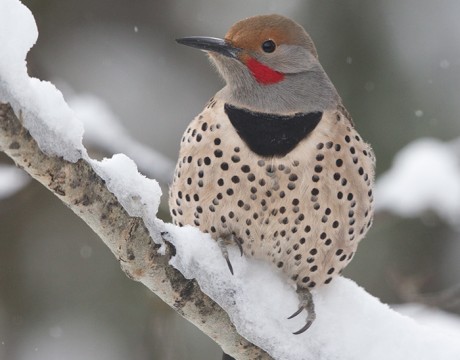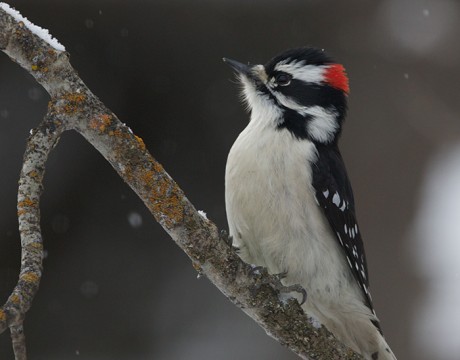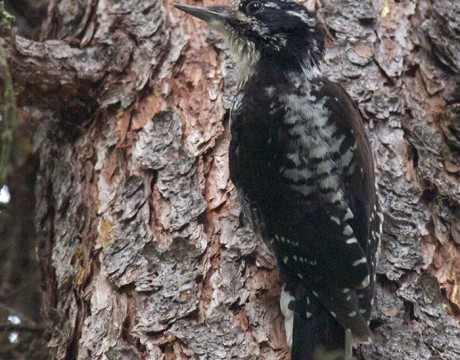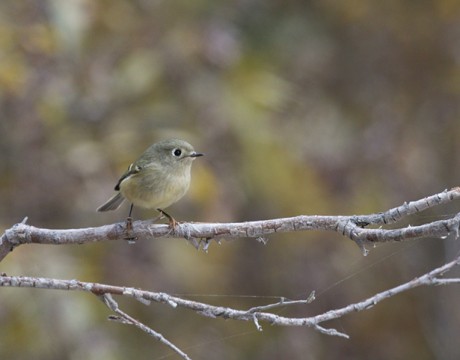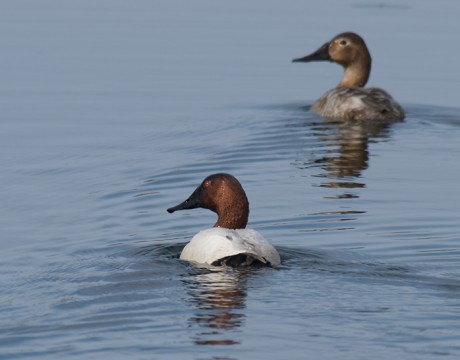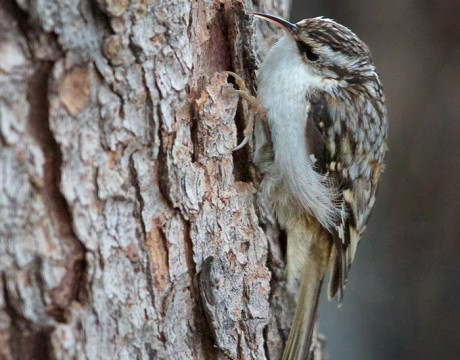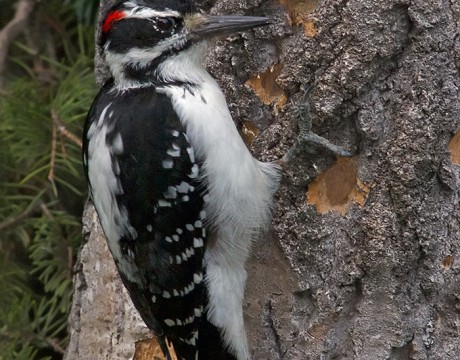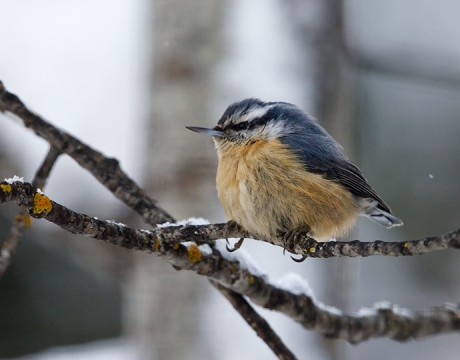Bird of the Week – Northern Flicker
The Northern Flicker is Alaska’s most colorful woodpecker. If the others are variations on black and white, with maybe a touch of color, the Northern Flicker broke the mold. This photo isn’t from Alaska; it’s from Central Idaho, but WC includes it because it captures the remarkable color and patterns of this extravagant bird. Here’s a photo from Alaska. Unlike the other woodpeckers posted, this one is primarly a ground-forager, a woodpecker that doesn’t peck wood. Although it does drum to establish territories and does forage on trees from time to time. The taxonomy of Flickers is . . ….
Bird of the Week – Downy Woodpecker
Continuing with woodpeckers, this is Alaska’s smallest woodpecker, and probably the most common year round. In many ways, the Downy is a smaller version of the Hairy, with similar patterning. But the Downy is much smaller, and has a proportionately smaller bill. The male has the red barring on the back of his head shown here. The female does not. Interior Alaska, where these birds were photographed, is near the northerly limits for this species, but the range of Downys is huge. In fact, they are found in all 49 continental states and all of the Canadian provinces. Like Hairy…
Bird of the Week – American Three-toed Woodpecker
We’ll go back to woodpeckers for a while. The American Three-toed Woodpecker is a medium-sized black-and-white woodpecker. The male has a small yellow patch on his forehead. The feet do indeed have only three toes, instead of the more common four: 2 forward and 1 backward. (The Black-backed Woodpecker has the same configuration.) The Three-toed can be a difficult bird to find. Unlike other woodpeckers, it doesn’t drill. Instead, it flakes off pieces of spruce bark to get to insects. It prefers spruce bark beetles, but is otherwise a generalist. Three-toeds will drum to establish territory, often picking a dead…
Bird of the Week – Ruby-crowned Kinglet
The smallest songbird in the New World boreal forest is the Ruby-crowned Kinglet. The red spot on the species’ head is only present in males and even then not all the time. Even ithout the red spot, the broken white eye ring, two white wingbars and incredible hyperactivity make this a pretty easy bird to identify in the field. If you can keep your binoculars on it as it frenetically jumps around. For a tiny bird, this little kinglet has an amazingly loud and long song. It’s a wonderful sign of spring. For more bird photos, please visit Frozen Feather Images.
Bird of the Week – Ruby-crowned Kinglet
The smallest songbird in the New World boreal forest is the Ruby-crowned Kinglet. The red spot on the species’ head is only present in males and even then not all the time. Even ithout the red spot, the broken white eye ring, two white wingbars and incredible hyperactivity make this a pretty easy bird to identify in the field. If you can keep your binoculars on it as it frenetically jumps around. For a tiny bird, this little kinglet has an amazingly loud and long song. It’s a wonderful sign of spring. For more bird photos, please visit Frozen Feather Images.
Bird of the Week – Canvasback
Back when WC was working through waterfowl earlier in this series, he overlooked an uncommon but widely distributed duck, the Canvasback. The bird is hard to overlook; the drake’s red eye and canvas-white back are very distinctive. It’s also the largest of the diving ducks. The very long bill is equally distinctive; only the Northern Shoveler has a bigger bill. The Canvasback is closely related to and can hybridize with the somewhat similar Redhead. Which also occurs in Alaska but, alas, WC doesn’t have an Alaska photo of the species. For more bird photos, please visit Frozen Feather Images.
Bird of the Week – Brown Creeper
If December 17’s Red-breasted Nuthatches usually climb down trees, Brown Creepers usually climb up. The cryptic coloration and very high-pitched vocalization on this species can make it tough to find. And populations have been greatly reduced by clear-cutting and removal of dead and dying trees, its preferred foraging area. The creeper uses its slender, decurved bill to capture invertebrates—mainly insects, spiders, and pseudoscorpions—from furrows in tree bark. It was not until 1879 that ornithologists discovered Brown Creeper’s unique habit of building a hammock-like nest behind a loosened flap of bark on a dead or dying tree. Those nests are incredibly hard to find. For more…
Bird of the Week – Hairy Woodpecker
For Christmas Eve, we’ll have a bird with a splash of Christmas color, the male Hairy Woodpecker. Only the males have red on their heads; females are just black and white. The Hairy Woodpecker is Alaska’s largest woodpecker. They are sometimes difficult to find in the forest. Tracking them down by their drumming is the usual approach. But they are enthusiastic about suet feeders, especially in the interior. Hairys dig nest cavities in trees. Looks for piles of wood chips around the base of a tree. Once the eggs hatch, the kids are noisy and the nest is pretty easy…
Bird of the Week – Red-breasted Nuthatch
You usually hear the characteristic “tinhorn” yank yank call of the Red-breasted Nuthatch before you see the bird. This species famously climbs head downward on tree trunks, distinguishing itself from the much-drabber Brown Creeper, which climbs up. The species is found across the United States and Canada, wherever there are spruce of fir trees, its preferred habitat. In Alaska, it’s common in southcentral and southeast, but uncommon in the interior and accidental further north and west. Unlike chickadees, Red-breasted Nuthatches rarely use nest boxes or existing cavities. In the winter, they join mixed flocks to forage, and are enthusiastic visitors to birdfeeders….
Bird of the Week – Chestnut-backed Chickadee
This is a colorful cousin to the more common and familiar Black-capped Chickadee. This is a bird of the far west and southeast and southcentral Alaska. While it is less vocal than its cousins, like Black-capped and Boreal Chickadees, it nests in cavities and readily uses nest boxes. During winter, they forage in mixed-species flocks with other chickadees, primarily Black-capped and Mountain Chickadees, as well as other small birds such as Ruby-crowned Kinglets and Red-breasted Nuthatches. For more bird photos, please visit Frozen Feather Images.





